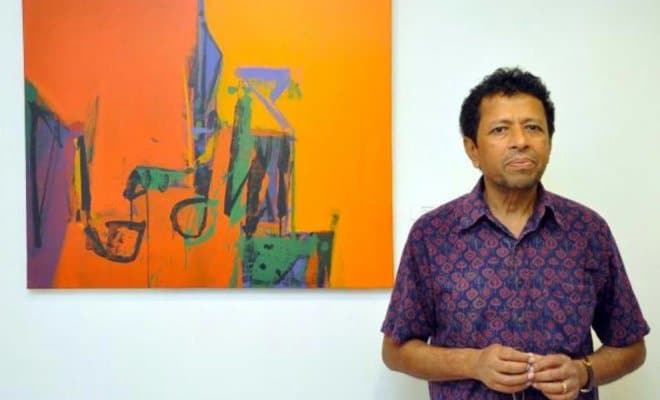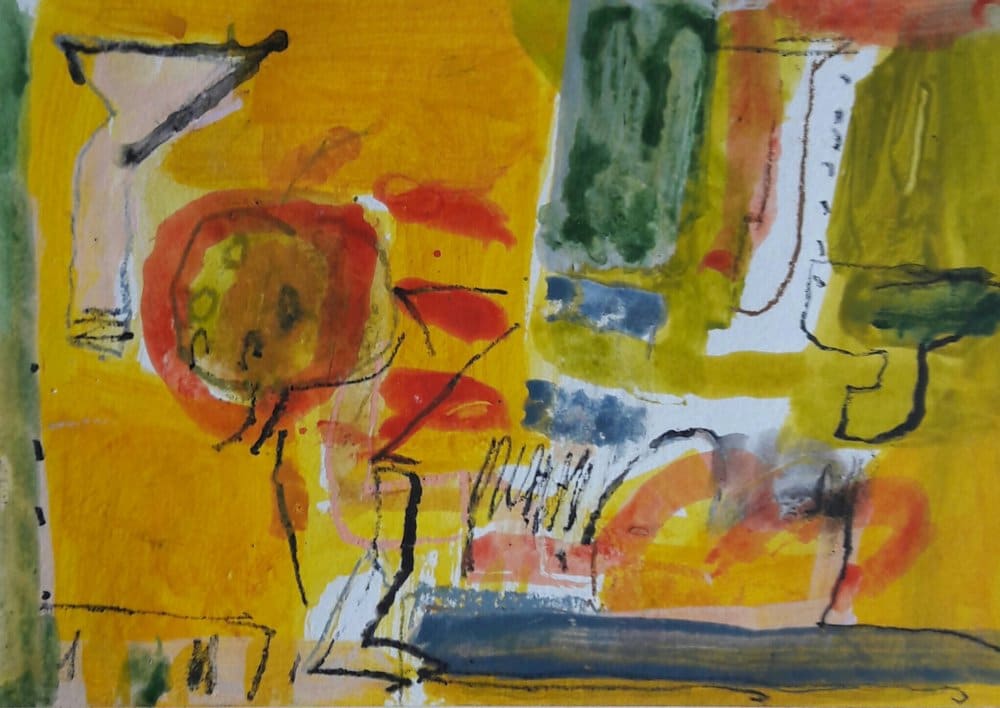Arts
NRI Voice: Colors of the World

Indian artist John Tun Sein
Germany-based contemporary Indian artist John Tun Sein has made a name for himself on the global stage, holding exhibitions across the world, from Mumbai to Munich.
Contemporary Indian artist John Tun Sein, nicknamed Little Buddha by his peer and friend artist Prabhakar Kolte, is filled with a quiet calm. This forms a sharp juxtaposition against his expressionist paintings with arresting visuals and bold colors, making one marvel at how still waters run so deep.
Making a name for himself on a global stage with exhibitions across India and the world, from Mumbai to Munich, Sein has settled in Germany but visits India often. He gives Little India a glimpse of his artistic genius and inspirations:
Growing Up Years
Memories of my growing up years were of the times in the sport grounds. Earliest memories are of childhood football games in the rains. They were my happiest moments. Later playing football and cricket for school and college were central to my growing up years. Engaging in sport taught me discipline and the need to focus. This extended later to art when I began pursuing it.
The impressions of growing up years in India will always be associated with memories of the old charm and beauty that has disappeared today.
I remember old Madras — how the big shady trees lined the streets and traffic flowed lazily. People had time to find leisure in simple activities and life was quiet and safe. It was a disciplined life, and friendly like a story book. Time played a different role. Growing up years were inspiring.
Path to Art
There wasn’t one particular incident that inspired me to pursue art. I suppose it was a gradual development. I have been drawing and painting since childhood to a good extent. Art was an integral part of growing up years. I remember looking up paintings of some masters works. I was inspired by British painter John Constable’s landscapes and made several attempts to study them alongside other European painters like Van Gogh and Paul Gauguin.
After my graduation, my father offered to support my growing interest in art by sending me to the Sir JJ School of Art in Bombay. It was during my studies that I went through greater transformation. To my good fortune I met my teacher Mr Kolte who inspired me and showed me the path to understanding the creative process of painting. To this day I remain inspired to pursue the journey which I see now as lifelong.
For me, the inspiration to create comes from within. It comes from doing and not from dreaming or waiting for extraneous impulses. Painting is all about actually painting. When I begin to paint I want to paint more. Inspiration is the moment and not something that lies outside the window. It is the moment of happening, the moment of becoming.
Onward to Germany
I came to Germany several years ago on a personal reason. I met my German wife in India. After my marriage I settled here. The journey has been educative. I had the benefit of living and experiencing both worlds, which are different in most aspects. Traveling broadened my vision and that, in turn, helped me to understand painting better.
I had direct exposure to western contemporary art alongside the works of the old masters who had inspired me in my growing-up years.
And my journeys back and forth to India kept me excited of all the development.

A painting by John Tun Sein
Western Influences
In history of art we read about the modern history of western art. Staying in the west in the past years, I have had several opportunities to see many of those works in original, and I understood the relevance of history as a link to the contemporary. The origin of abstraction has its roots in western art. The works of New York band of abstract artists of the early 20th century was a core of my study on abstract art and had major influence on me.
My travels to the art centers in the west have strengthened my vision and exposed me to broader understanding of my own art and its development.
Indian Art on Global Platform
In the recent years of globalization there has been an increased visibility. During the period of boom in the art market, the contemporary Indian art gained recognition at the different platforms across the western world.
However, what is seen as marketable is not necessarily representative. In a haste to capture the world’s market and attention, mediocre Indian art found its way. Art became instant. Art that is created for market cannot have a long standing. Unfortunately, it turned out to be so.
The recent retrospective show of Gaitonde at the Guggenheim Museum in New York showed us that true art always find its way. There is no rush, no hurry. Good art is always seen and recognized. This must be the test to the global stage.
Popular Indian contemporary art, which captured the world’s attention in the last years has mostly been a marketed art and not a true representative of contemporary Indian art. Art must grow slowly like a tree.



